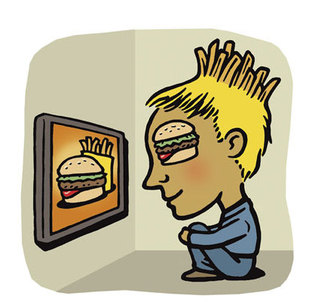 loading
loading
FindingsThe lure of food adsThat burger is just a picture, but it generates real cravings.  Gregory NemecView full imageFood advertising is everywhere, and the ads we see day in and day out are not enticing us to eat carrots. At the same time, two-thirds of the US population is either overweight or obese, compared with only 15 percent 30 years ago. Although the reasons for Americans’ increased weight are complex, there is mounting evidence that advertising of unhealthy foods is a key factor, says Hedy Kober, professor of psychiatry and psychology at the Yale School of Medicine. Kober and Rebecca G. Boswell ’18PhD analyzed 45 previously published studies that included nearly 3,300 participants who were exposed to food cues such as advertising. The data revealed that that exposure had a measurable effect—as much as a 26 percent variance—on cravings, eating behavior, and weight. The findings held regardless of factors such as gender, race, and weight. (The paper appeared in Obesity Reviews.) “While all advertising is geared towards increasing desire,” Kober says, “our bodies respond with particular intensity to food cues. The first time you smell chocolate chip cookies, your body reacts in specific ways, such as releasing stomach acid. An advertisement for chocolate chip cookies elicits a similar physiological response.” Because we have evolved to pursue food, images that activate food cravings—especially for high-calorie foods—are more potent than other kinds of advertising. Can studies such as this influence the public? Kober hopes so. “If we know how powerful food ads are,” she says, “we have the tools to convince policy makers that we don’t want our kids exposed to the constant barrage.”
The comment period has expired.
|
|